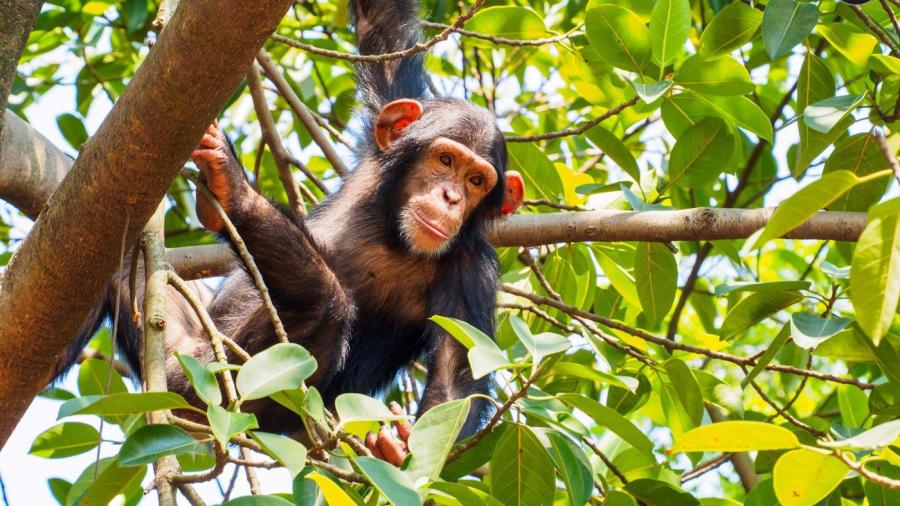5 Adaptations Of A Monkey
What Are Some of the Adaptations Exhibited by Monkeys?

Monkey adaptations include their anatomy, beliefs and use of tools. Specific adaptations depend on the species. For example, capuchin monkeys, common chimpanzees, bonobos and orangutans all use tools. Chimpanzees apply sticks to probe termites and scoop dear for food; they use rocks to cleft nuts.
Many types of monkeys, particularly those in the New World, take prehensile tails. They are able to employ this tail near every bit another manus, which helps them climb and find nutrient. Some monkeys, such as capuchins, hang from their tails while eating. The hands themselves are hook-like, allowing them to swing from branch to co-operative. Howler monkeys take developed large vocal cords which allow the males to announce their presence, thereby protecting their habitats from encroaching rival monkeys. Squirrel monkeys secrete a musk through their fur to mark their territory. They've also developed short, powerful thighs that help them leap from tree to tree.
A behavioral adaptation of monkeys is their habit of living in societies. This allows the young and erstwhile to have shut associations and care for each other. Generally all the monkeys within their group have a function that helps the group survive. For example, older monkeys teach survival skills to the young, ensuring that they are ready to manage their surround when they abound upward. Working as a group also allows them to avoid or intimidate predators.
5 Adaptations Of A Monkey,
Source: https://www.reference.com/pets-animals/adaptations-exhibited-monkeys-a2e81e99796b54de
Posted by: petersonhadioncoulne1959.blogspot.com


0 Response to "5 Adaptations Of A Monkey"
Post a Comment